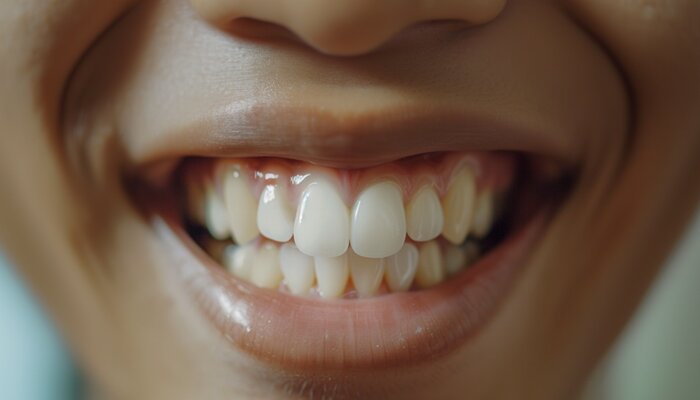If you’ve been considering teeth straightening options, you’ve likely come across Invisalign as a key part of cosmetic dentistry. As a modern alternative to traditional braces, Invisalign offers a discreet and comfortable way to align your teeth without the visible metal brackets and wires. In this article, we’ll explore how Invisalign works, providing you with the essential understanding of this innovative treatment to help you achieve the smile you deserve.
What Is Invisalign and Who Is It For?
Invisalign is an orthodontic treatment that uses clear, removable aligners to gradually straighten teeth. Customised for each patient, these aligners are made of a flexible plastic material known as SmartTrack, designed to exert gentle, controlled pressure on specific teeth over time. Invisalign can address a range of dental issues such as overcrowding, spacing problems, overbites, underbites, and crossbites. However, it’s essential to consult with an experienced dentist to determine if Invisalign is suitable for your specific needs. Complex orthodontic cases may still require traditional braces or alternative treatments.
1. The Initial Consultation and 3D Imaging Process

Your journey for Invisalign in Singapore begins with an initial consultation with a qualified orthodontist or dentist. During this visit, the dentist will assess your oral health and discuss your smile goals. If Invisalign is deemed suitable, a precise digital impression of your teeth will be created using advanced technology. This technology captures a detailed 3D model of your teeth, eliminating the need for traditional, uncomfortable impressions.
These 3D models form the foundation of a comprehensive, computer-generated treatment plan that maps out the movement of each tooth throughout the treatment process. The best part? You’ll get a preview of how your smile is expected to look at the end of the treatment before it even begins.
2. How the Aligners Work and What to Expect During Treatment
Invisalign aligners are custom-made based on your digital impressions and treatment plan, with each set differing slightly from the previous one. Here’s how they work in practice:
- Gradual Pressure and Tooth Movement: Each aligner applies gentle, controlled pressure to specific teeth. This targeted pressure moves your teeth gradually, stage by stage. Each set of aligners is typically worn for about 1-2 weeks before switching to the next set, as advised by your dentist.
- Daily Wear Time: To achieve the best results, you need to wear your aligners for 20 to 22 hours a day, removing them only for eating, drinking (except for water), and oral hygiene. The consistency of wear is crucial for maintaining progress and sticking to your treatment timeline.
It is common to experience mild discomfort, especially when starting a new set of aligners. This sensation is a sign that the aligners are effectively shifting your teeth according to the treatment plan. Unlike traditional braces, Invisalign aligners are smooth and made from BPA-free plastic, making them less likely to cause irritation to the inside of your mouth.
The Role of Attachments and Additional Components
In more complex cases, your dentist may add small, tooth-coloured attachments to help the aligners apply the right amount of pressure. These attachments act as tiny anchors, aiding in more precise tooth movement. Although they may add a bit more visibility to your treatment, they play a significant role in helping achieve optimal results.
3. Monitoring Progress and Adjustments

Regular check-ups with your dentist, typically every 4-8 weeks, are essential for tracking your progress. During these appointments, your dentist will ensure the aligners are fitting well, evaluate how your teeth are shifting, and provide you with the next sets of aligners. These visits also give your dentist the opportunity to make any necessary adjustments to keep your treatment on track. While total treatment time can vary, it generally lasts between 6 and 18 months, depending on the complexity of your case and how consistently you follow your treatment plan.
4. The Final Stages: Retainers and Maintaining Your New Smile
When your treatment plan is complete, and you’ve worn your last set of aligners, the next step is retention. Teeth can shift back to their original positions over time, so wearing a retainer is important to maintain the alignment achieved with Invisalign. These retainers, often made of a similar clear material as your aligners, should be worn as directed by your dentist, typically at night.
The length of time required to wear a retainer can vary, but it is generally recommended to ensure long-term results. Adhering to this post-treatment phase helps lock in your new smile and prevents any regression.
Achieve Your Ideal Smile with Invisalign’s Innovative Approach!
Invisalign offers an effective and discreet solution for those looking to transform their smile without the hassle of traditional braces. From customised 3D imaging and advanced treatment planning to comfortable, removable aligners and tailored retention strategies, every step of the process is designed to deliver optimal results with convenience and minimal disruption to your lifestyle. If you’re ready to embrace a modern, flexible approach to teeth straightening, consulting with a dentist will help you start your journey toward the confident, radiant smile you deserve.


















